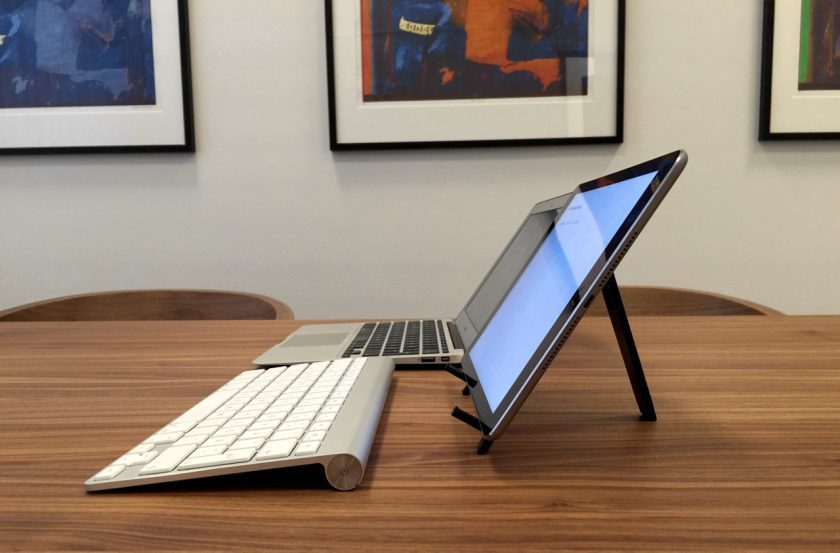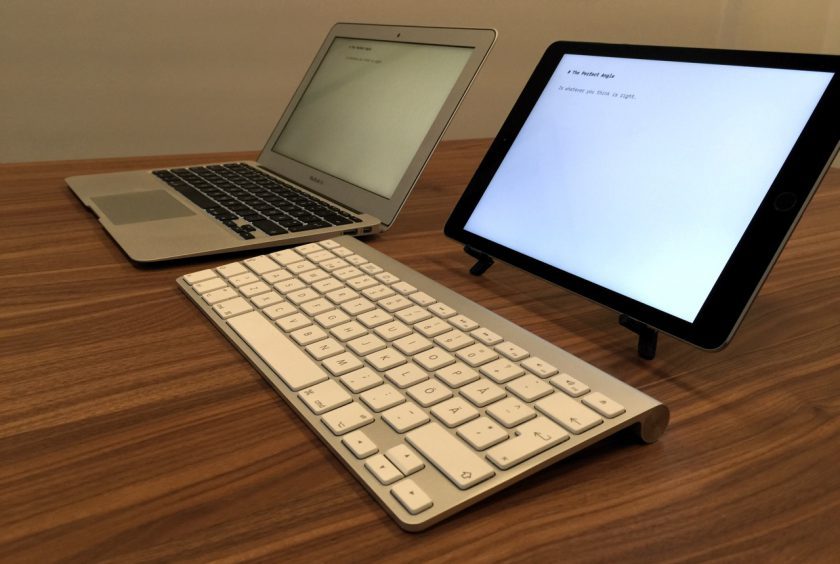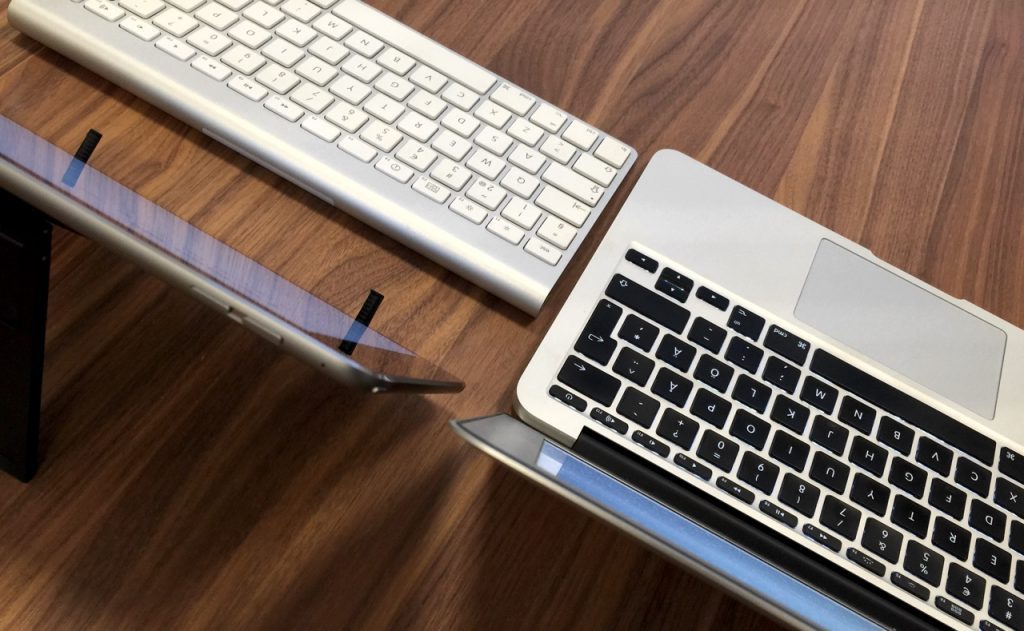It’s important that your writing position is ergonomic, putting low stress on your body. Writers are well known for not paying enough attention to this, thus experiencing more pain than necessary. One of the complaints about tablet-centric setups is the angle downward, towards the screen, and how this is bad for you. This is all true, but it’s not a tablet-specific problem. In fact, just about every laptop has this problem.
Take the 11″ MacBook Air, as close to the perfect writing laptop you can get. It’s got a nice full-sized keyboard, a decent enough screen (although it doesn’t do it for me these days since it’s not retina – yet), and it’s very portable.
Then take the iPad Air 2 (or any full-sized iPad, the mini changes things a bit), a decent stand such as Twelve South’s Compass 2, and connect it to your bluetooth keyboard of choice. Let’s go with Apple’s wireless one since that’s almost identical with MacBook keyboards.
Put them side by side, and you get this:

The writing situation is almost identical between the 11″ MacBook Air, and the iPad Air 2, in this setup. It’s a pretty standard setup, most stands will give you this position, and most non-cover keyboards will be similar to Apple’s wireless one. There are obviously keyboards that are bulky, mechanical ones mostly, and that changes the writing experience – and whatever strain you might incur thus – but then it’s not comparable to a MacBook Air anymore.
A standard iPad writing setup with an external keyboard will not put more strain on you than using an 11″ MacBook Air. The larger the screen, the higher you can focus your eye, thus craning your neck less, which is preferable. Laptops are built to be connected to the keyboard though, and thus you’ll look further down on a larger screen at some point as well. It’s negligible, and the notion that writing on an iPad, with a typical stand, and a bluetooth keyboard, should be more stressful on your body, neck in particular, is just not accurate.

It doesn’t end there though. Your laptop screen is connected to your keyboard. When you put the laptop on the table, there’s little you can do in terms of elevation. You could use an external keyboard and trackpad, and a stand for your laptop, of course, making your setup more akin to a desktop computer. This means that you can construct a better writing position, minimizing strain, and you should definitely consider this. For this piece, however, that setup isn’t especially interesting, since you could put your iPad in an arm and put it in the perfect height as well.

The big difference between a laptop, used in “laptop mode”, writing setup, and the standard iPad writing setup, is that you iPad isn’t necessarily connected to the keyboard. I have nothing against keyboard covers, nor external keyboards with built-in stands, but they’re all less flexible than a separate bluetooth keyboard. Moving your iPad screen further from the keyboard, or elevating it, is something a laptop can’t do. That’s a benefit of the iPad writing setup, because if you truly just want to elevate the screen, you can stack some books below it, or whatever. I often put my iPad on the living room table, kick back with a keyboard in my lap, and type away. I could have a laptop in my lap, but then it’d get warm, and it’s a lot more unwieldy. While not ideal for long writing sessions, throwing a glance at the iPad screen on the table is better than craning over the laptop. You might hate this particular setup, but the beauty is that you can figure out your own. This is one of the big reasons why I love the iPad as a writing device.
The angle and strain of an iPad writing setup, featuring an external bluetooth keyboard, and a decent stand, isn’t a valid reason to use a laptop. They’re the same. No, scratch that, the iPad’s potentially better, since you can move the components around any way you like.
